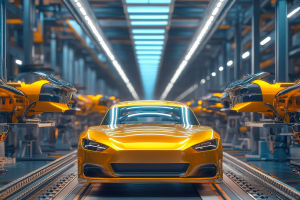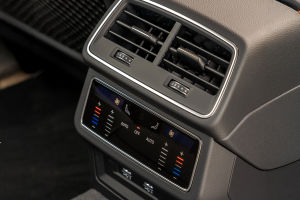Hey there, car lovers! Have you ever wondered how car designs evolved over the decades? From the vintage classics to the sleek, futuristic cars we see today, the design of automobiles has undergone a massive transformation.
It's not just about aesthetics—it's a reflection of the times, the technologies, and the trends that shape our society.
In this article, we'll trace the fascinating history and evolution of car design and explore how these changes mirror both societal shifts and technological progress. Let's hop in and take a ride through history!
The Early Years: The Birth of the Automobile
In the late 19th century, the first automobiles were born. These early vehicles, like Karl Benz's Patent-Motorwagen from 1885, were functional but far from glamorous. The design was simple, focusing primarily on practicality and mechanical innovation rather than style.
The first cars resembled large carriages with no horses—just a motor and wheels. The aesthetic was square, boxy, and utilitarian, mirroring the industrial and mechanical advancements of the era.
By the early 20th century, as automobiles became more mainstream, manufacturers began adding more style to their vehicles. Cars like the 1914 Ford Model T were designed to be affordable and practical but with a slight touch of elegance, using rounded edges and more refined details. This period marked the beginning of car design as we know it, where both functionality and form started to go hand-in-hand.
The 1920s-1940s: The Rise of Luxury and Streamlined Designs
As we moved into the 1920s and 1930s, the automotive world started to experiment more with aerodynamics and luxury features. This era saw the rise of streamlined designs, where manufacturers were inspired by the speed and beauty of airplanes.
Cars like the 1934 Chrysler Airflow exemplified this shift, with smooth, flowing lines and a focus on reducing wind resistance. These designs were not just practical—they were sleek, modern, and reflected a new optimism in society.
During this time, automotive manufacturers also began focusing on luxury cars. Brands like Rolls-Royce and Cadillac produced vehicles that were as much about status and comfort as they were about transportation. These cars featured lavish interiors, chrome details, and graceful curves, showcasing the sophistication of the era.
The emphasis on design as a symbol of status was clear—cars were no longer just a mode of transportation; they were an expression of wealth and prestige.
The 1950s-1970s: The Age of Chrome and Bold Lines
The era brought about a massive boom in the automotive industry. In the 1950s and 1960s, car designs became more bold and flashy. This was the era of chrome bumpers, tailfins, and vibrant colors. Cars like the 1957 Chevrolet Bel Air and the 1964 Ford Mustang represented the epitome of American automotive design.
The sleek curves, shiny chrome accents, and powerful engines reflected the exuberance and optimism of the time.
These years were also marked by a growing desire for performance and speed. The muscle car era of the 1960s saw the rise of powerful vehicles like the Dodge Charger and Pontiac GTO. The focus was on performance and aesthetics, and car design reflected a society eager to embrace new technological advancements, like V8 engines and better suspension systems.
The car wasn't just a way to get from point A to point B—it was an experience, an escape, and a symbol of freedom.
The 1980s-2000s: Minimalism and Safety Innovation
As we moved into the late 20th century, car design took a turn toward minimalism and practicality. The 1980s saw the rise of more compact, fuel-efficient vehicles. Designs became cleaner and less flamboyant, with less emphasis on chrome and more focus on aerodynamics and efficiency.
The Toyota Camry and Honda Civic emerged as symbols of practicality, offering reliable, cost-effective transportation for the everyday person.
At the same time, safety became a significant factor in car design. The introduction of airbags, anti-lock brakes, and crumple zones in the 1990s brought a new focus on making cars safer for occupants. These innovations influenced the design of car interiors, leading to more robust structures and more comfortable cabins. Aesthetic considerations took a backseat to functional and safety features, but the designs remained sleek and modern.
2000s-Present: Sleek, Tech-Driven Designs
Now, we're in the age of sleek, high-tech automotive design. Cars today are built with cutting-edge technology in mind—think advanced infotainment systems, electric drivetrains, and autonomous driving capabilities.
Modern cars like the Tesla Model S are not just a means of transportation; they are smart, tech-forward devices that blend futuristic design with incredible functionality.
Car shapes have become smoother and more aerodynamic, with an emphasis on fuel efficiency and electric power. Many modern vehicles feature sharper lines and bold angles, as manufacturers push the boundaries of design to reflect technological advancements. The 21st century's fascination with technology is evident in car designs, where each new model seems to push further into the realm of science fiction.
Electric vehicles (EVs) like the Tesla Model 3 and the Nissan Leaf also reflect a change in both design and values. These cars are built to be energy-efficient, but they're also designed with aesthetics in mind, featuring clean lines and an eco-conscious appeal that aligns with the growing demand for sustainability.
The Future of Car Design: What's Next?
So, where does car design go from here? As we look to the future, car designs will likely continue to evolve in response to changing technological landscapes and societal values. Autonomous vehicles, for example, will likely lead to new design trends, as the need for traditional driver controls may disappear altogether.
Expect to see more customizable and modular interiors, where users can design their personal space according to their preferences.
Additionally, the rise of eco-consciousness will push car manufacturers to explore even more sustainable materials, while still keeping designs sleek and modern. We might even see more biomimicry in design, where cars are inspired by nature for better aerodynamics and eco-friendly features. The possibilities are endless, and the future of car design is as exciting as ever.
Conclusion: Reflecting Society's Changing Needs
In conclusion, the evolution of car design is a fascinating journey through time, from the early utilitarian vehicles to the sleek, futuristic models we see today. Each era of car design reflects the technological advancements and societal values of the time.
We've come a long way, and the cars of tomorrow are sure to be even more advanced, sustainable, and innovative.
What do you think? Which car design era do you find most appealing? Or, are you most excited to see what the future holds? Let's chat in the comments below—your thoughts are always welcome!


